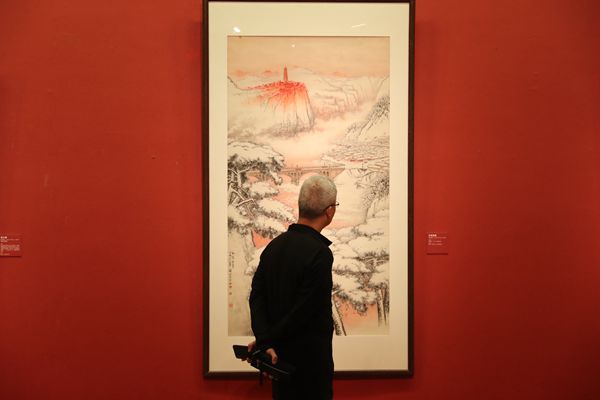 |
|
[Photo by Jiang Dong/China Daily] |
The journey freed Qian from the old teachings and helped to reform his style. His works of pro-realism portray contemporary scenes of construction in the country against a background of grand landscapes varying in different parts of China. His brushwork also shows a change in subject of the paintings, from agricultural scenes to those of industrialization.
At the entrance to the exhibition stands a bronze statue of Qian sculpted by Wu Weishan, director of the National Art Museum. Wu says he first learned about Qian in the 1970s after seeing a copy of his painting that depicts a pine tree on the Taishan Mountain in Shandong province.
"The copy was on the wall of my family home for a long time and the name of Qian Songyan was deeply etched in my heart," Wu, himself a sculptor, says.
Wu first met Qian when they both sketched sitting by the Xuanwu Lake in Jiangsu's provincial capital Nanjing years later.
"He was thin but stood upright. His hair had turned gray and he wore a long beard. My impression of his extraordinary elegance set the tone for his statue (at the show).
"Thanks to his efforts, the genre of mountain-and-water that once regressed in creativity was revived to serve the people again."